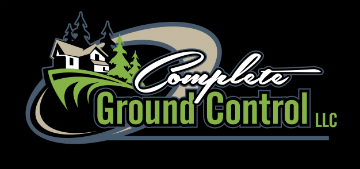Ants are one of the most common pests found in and around homes in Minnesota. Most common ants found invading homes in Minnesota include carpenter ants, cornfield ants, pharaoh ants pavement ants, and thief ants. Species vary in size and color and differences in the antenna, head, thorax, petiole and abdomen allow for identification of individual ant species. Reproductive male ants have wings and may be mistaken for termites. Ants live in colonies and are social insects. The ant colony consists of castes and are made up of a queen, winged males, major workers and minor workers.
Inspection
We perform a thorough inspection identifying ant type, nest locations, food sources, structural problems contributing to the infestation including water leaks, water damage, foundation issues, problems with landscaping, sanitation problems and tree and shrub issues. These should all be addressed to ensure complete control of this insect.
Treatment/Control
Ant treatment varies according to species of ant, nest locations, foraging locations, and time of year. We use combinations of long lasting non repellent insecticides which are non-detectible to ants and are transferred by foraging ants back to the nest sites these non-repellents are long lasting and can be used as part of a yearly ant prevention program. Dust formulations may be used in wall voids and other inaccessible areas. Baits may be used which are consumed by foraging ants and brought back to the nest.
Prevention
Preventing ants from entering the home can be difficult and frustrating. Proper food storage and waste management indoors and out can play a major role. Vacuum daily, correct moisture problems, empty and clean trash bins regularly, keep dishes clean, and clean kitchen surfaces often. Use caulk to seal cracks where ants are entering the home. The use of glue board traps can detect ant infestations early on and aid in treatment.
Carpenter Ants
 Carpenter ants are usually large about 1/4 inch to 3/4 of an inch in length and typically are blackish or very dark bodied. Workers have rather large mandibles (chewing mouth parts). The damage these ants cause is a result of their nesting habits. These ants build their nests in moist or rotted wood. While carpenter ants do not eat wood large colonies can be very destructive. Colonies usually consist of a primary nest outdoors and one or several satellite nests which are often times located indoors. The elimination of all nests is required for complete carpenter ant control making treatment success difficult.
Carpenter ants are usually large about 1/4 inch to 3/4 of an inch in length and typically are blackish or very dark bodied. Workers have rather large mandibles (chewing mouth parts). The damage these ants cause is a result of their nesting habits. These ants build their nests in moist or rotted wood. While carpenter ants do not eat wood large colonies can be very destructive. Colonies usually consist of a primary nest outdoors and one or several satellite nests which are often times located indoors. The elimination of all nests is required for complete carpenter ant control making treatment success difficult.
Inspection
We start with thorough inspection both inside of the home and outdoors. Indoors we are looking for active ants, moist or decayed wood, leaks in and around plumbing, and small piles of wood they leave behind called frass. Common nesting sites indoors include bathrooms, sinks, kitchens, wall voids, doors, areas around windows and in the attic. Outdoors the carpenter ants nests will typically be found in trees, tree stumps, landscaping timbers, firewood piles and fence posts.
Treatment/control
Indoors we use a combination of dusts, fast acting insecticides for quick knock down, and slow acting non repellent insecticides in areas where nests and ant activity are found or reported. Outdoors we use non-repellent insecticides that are transferred by foraging carpenter ants back to the nesting locations. Exterior treatments consist of a barrier treatment which is made 2 feet up and two feet out around the homes foundation. Crack and crevice treatments are made to potential entry points such as around windows, eaves and soffits, decks, and nesting locations. We use a two treatment process to insure carpenter ant control this program can be continued yearly as a carpenter ant prevention program.
Prevention/control
Indoors remove water damaged wood if possible and correct the cause for the damage. Repair leaky sinks toilets, baths, pipes, windows, and roofs. Increase ventilation in crawl spaces, basements, attics or other damp areas. Thoroughly inspect firewood before bringing it into your home. Outdoors remove rotted or decayed trees, fence posts, firewood, stumps, tree roots, and landscaping timbers. All trees and shrubs making physical contact with the homes siding or roof should be trimmed back at least one foot to eliminate potential entry points.
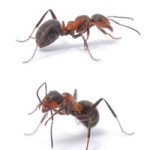 Ants
Ants Asian Beetles
Asian Beetles Bats
Bats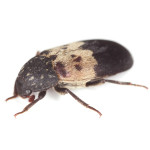 Beetles
Beetles Box Elder Bugs
Box Elder Bugs Centipedes
Centipedes Cockroaches
Cockroaches Fleas
Fleas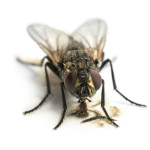 Flies
Flies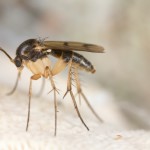 Gnats
Gnats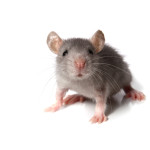 Mice
Mice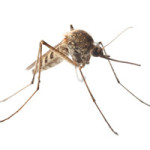 Mosquitoes
Mosquitoes Raccoons
Raccoons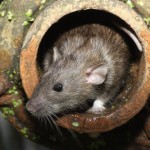 Rats
Rats Skunks
Skunks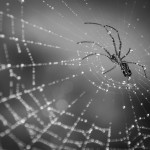 Spiders
Spiders Squirrels
Squirrels Wasps and Hornets
Wasps and Hornets